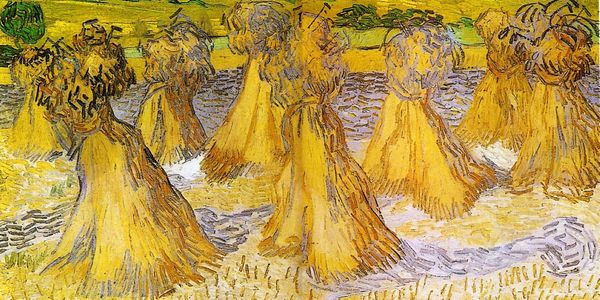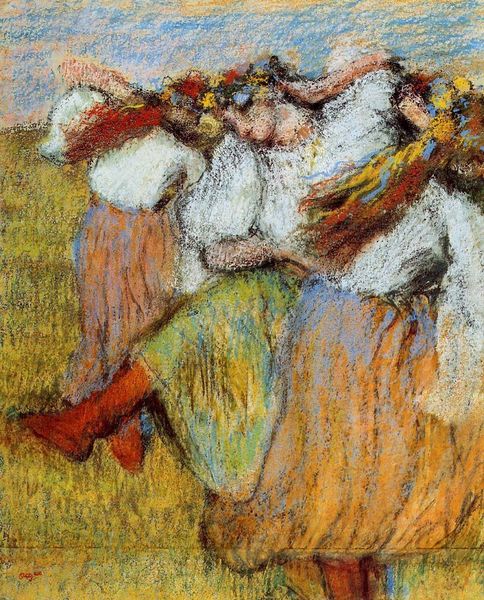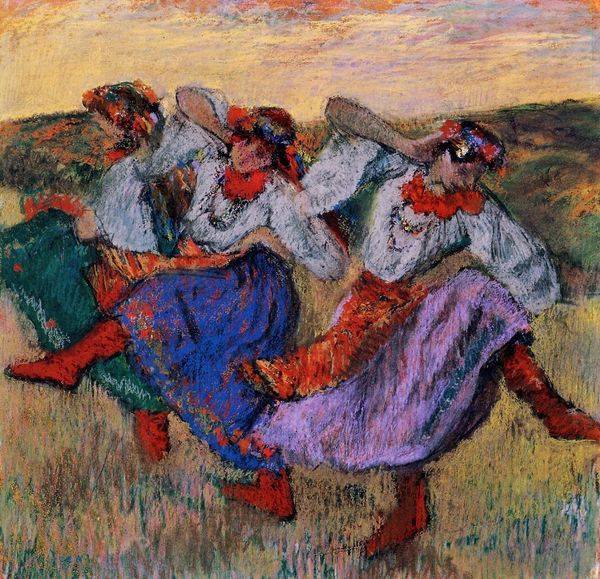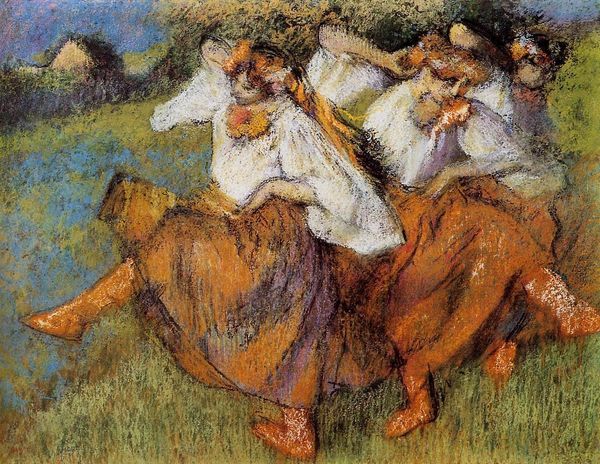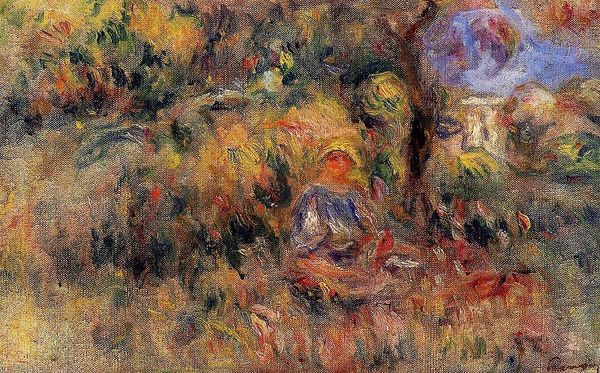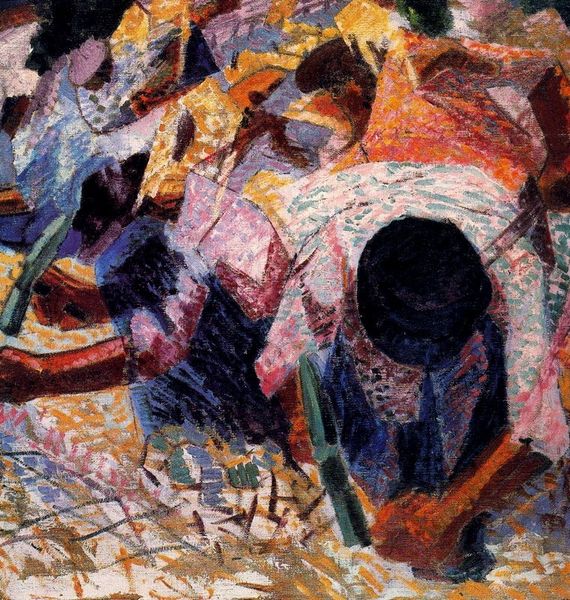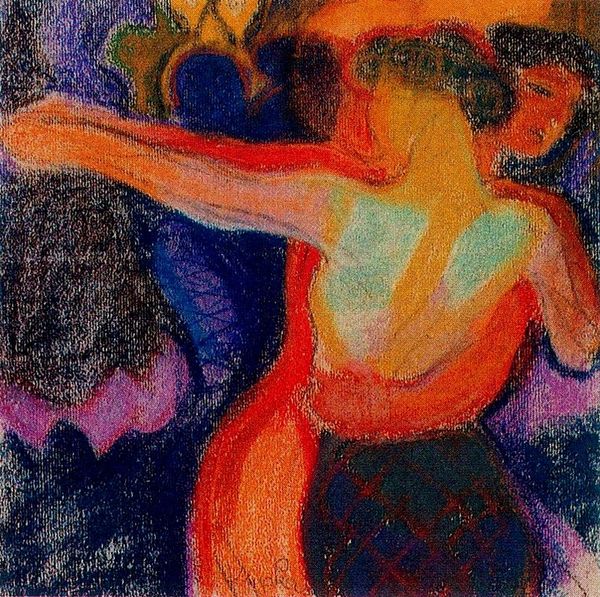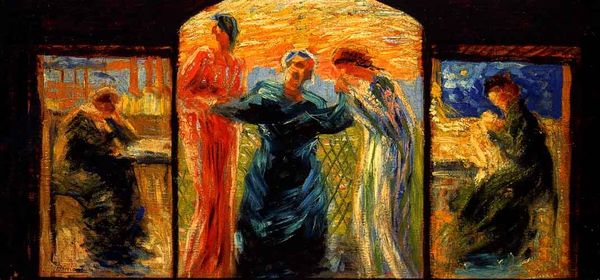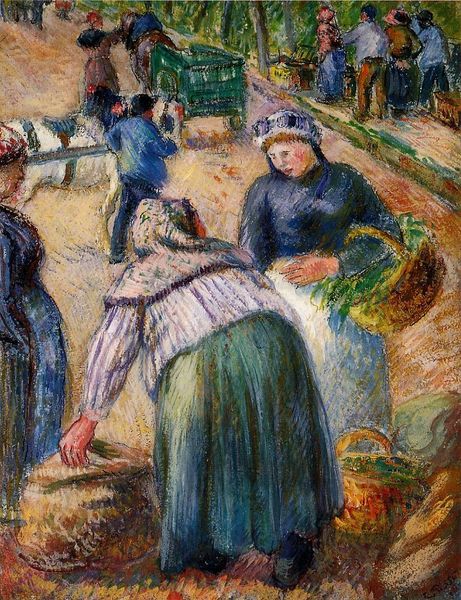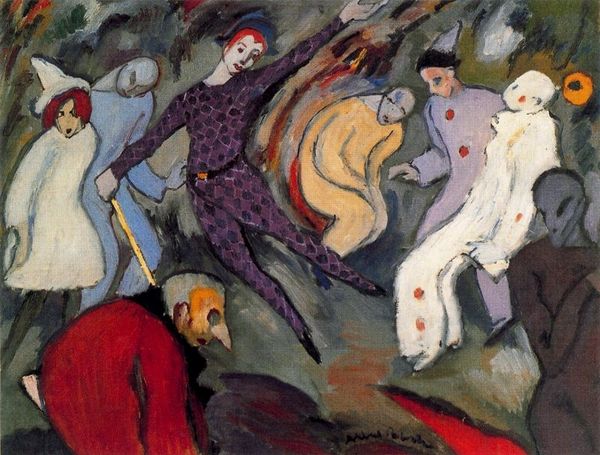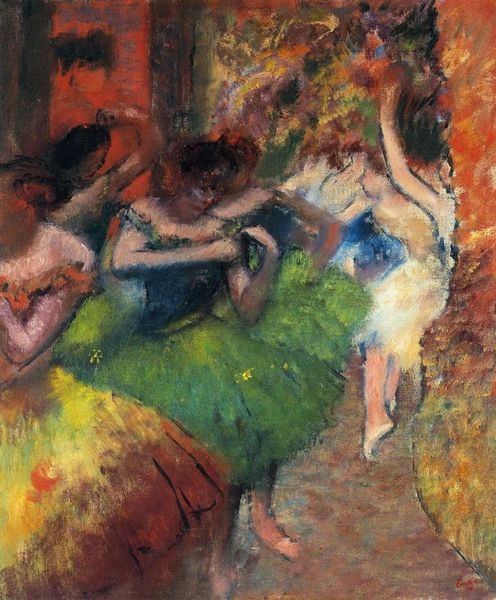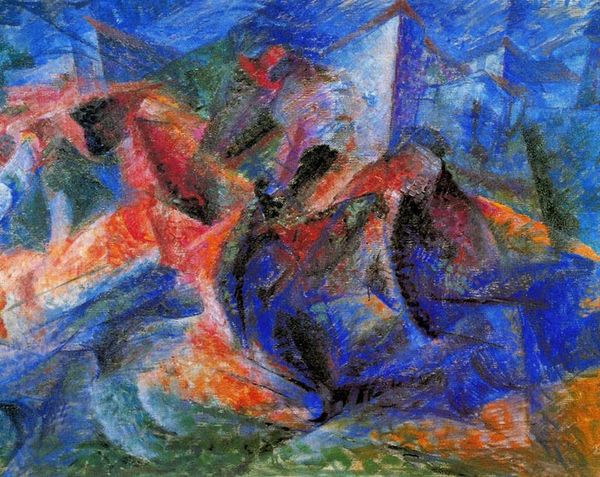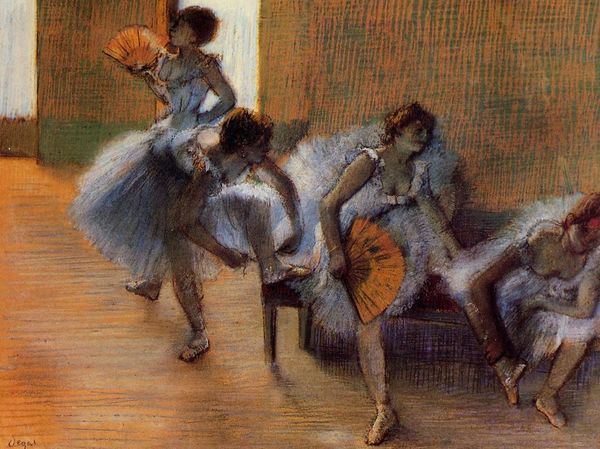
painting, oil-paint
#
painting
#
oil-paint
#
geometric
#
cityscape
#
futurism
Copyright: Public domain US
Curator: So, this painting is entitled "Leaving the Theatre" by Carlo Carra, made around 1910. It's oil on canvas. Editor: It feels chaotic! Like a flurry of dark coats and hats dissolving into the bright lights. The texture seems quite dense. Curator: Carra was a key figure in the Futurist movement, which celebrated technology, speed, and the dynamism of modern life. We see that spirit here, don't we? But through which materials was that done and with what conditions of its production? Editor: Absolutely, especially looking at how theatre culture was viewed at the time, its popularization and subsequent availability across society, and here the figures literally 'explode' outward from the theater's doors. What was so appealing about theatre, to cause that excited reaction? Or what was repelling them outward in droves? Curator: His use of visible brushstrokes breaks up the image into fragmented pieces. It's not about a smooth, illusionistic rendering of reality but rather about capturing movement and energy and about the industrial production and chemical properties of oil paint. Editor: And you're right—the lack of solid forms actually reinforces that sense of bustling activity. I think it has implications for ideas about entertainment culture, the rise of urban spectacle. A commentary on the impact on how citizens socialize en masse and process cultural life. Curator: I see the value in what you're saying about industrial conditions in this, a depiction that seems far away from manual labor... but in its material creation, in those daubs of pigment that Carra mixed, ground, bought from a shop with other industrially sourced items, perhaps it's a mirror of modern conditions too, rather than simply representing its effect. Editor: It all swirls together. It makes me think about the cultural importance of theaters then and the democratization of cultural events, who it affected, what it did for communities. That industrial perspective ties together very well with an exploration of theatrical culture, I think. Curator: Considering that tension helps re-contextualize our understanding of it as something produced. A painting. Made by a painter with materials, labor, and a place in early 20th-century commerce and industrialism. Editor: Indeed, from high art to high society and back again—revealing production and material, this all feels part of the picture. Thank you for adding such interesting insights. Curator: Of course. It's the sum of its cultural context and materials. That's what moves me.
Comments
No comments
Be the first to comment and join the conversation on the ultimate creative platform.
